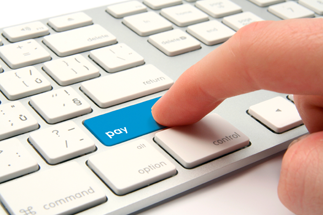News
Flat Rate VAT Scheme
27 - 04 - 2021
What is the Flat Rate VAT (FRV) Scheme?
The Flat Rate VAT scheme is beneficial to small businesses as it simplifies the calculation of their VAT by applying a flat rate percentage to their VAT inclusive turnover. The flat rate percentage applied is determined by whether the business is classed as a Limited Cost Trader or, if not, the trade sector into which a business falls for the purposes of the scheme. Flat rate percentages are lower than the current standard VAT rate of 20%.
Do I have to be VAT registered?
Yes.
You need to be VAT registered to apply for the Flat Rate VAT Scheme.
How does the Flat Rate VAT Scheme work?
Under the scheme the business continues to charge their customers the normal rate for the supply of taxable goods or services and issue tax invoices. However, the business only pays over to HM Revenue and Customs the flat rate percentage of the tax inclusive turnover, allowing the additional VAT received into the business to be accounted for as additional income. The increase in profitability will be subject to corporation tax. The disadvantage of the scheme is that no input tax can be reclaimed. The advantage, therefore, lies with a company with high sales and low purchases the position which exists for most labour only personal service companies.
Key points to note in relation to the Flat Rate VAT scheme:
(a) No input VAT. VAT on purchases, is not recoverable under the Flat Rate VAT scheme due to the benefit of paying VAT at a lower than standard rate. In effect an allowance for input tax is built into the flat rate percentage.
(b) A business under the Flat Rate VAT scheme applies a flat rate percentage to the VAT inclusive turnover.
(c) If it is not deemed to be a Limited Cost Trader, the flat rate percentage is determined by the trade sector in which a business trades.
(d) A reduction of 1% is applied to the flat rate percentage for the first year of VAT registration.
What has changed?
From 01 April 2017 anyone classed as “Limited Cost Trader”, operating the FRV Scheme, has to apply a 16.5% flat rate VAT percentage. This replaced the current trade sector percentage applicable.
What is a “Limited Cost Trader”?
A Limited Cost Trader is anyone whose VAT inclusive expenditure on goods is either:
1. Less than 2% of their VAT inclusive turnover in a prescribed accounting period, or;
2. Greater than 2% of their VAT inclusive turnover but less than £1,000 per annum (apportioned if prescribed accounting period is different to one year).
What goods can be included?
Goods must be used exclusively for the purpose of the business. The definition of “goods” specifically excludes:
· Vehicles, vehicle parts and fuel except for traders involved in transport;
· Food or beverages consumed by the trader and employees;
· Goods for disposal such as promotional items, gifts or donations;
· Accountancy fees;
· Capital items.
When was the change implemented?
These changes took effect from 1 April 2017. Notices of changes to VAT Flat Rate Scheme were issued by HMRC to companies.
If you would like to discuss any of the issues noted above, please contact us on:
01244 625 500 or 01978 364 000
contactus@foremansllp.com
Whilst all due care and attention has been taken in the preparation of these notes no liability
can be accepted for any omission or item contained therein.
Foremans LLP
April 2021


